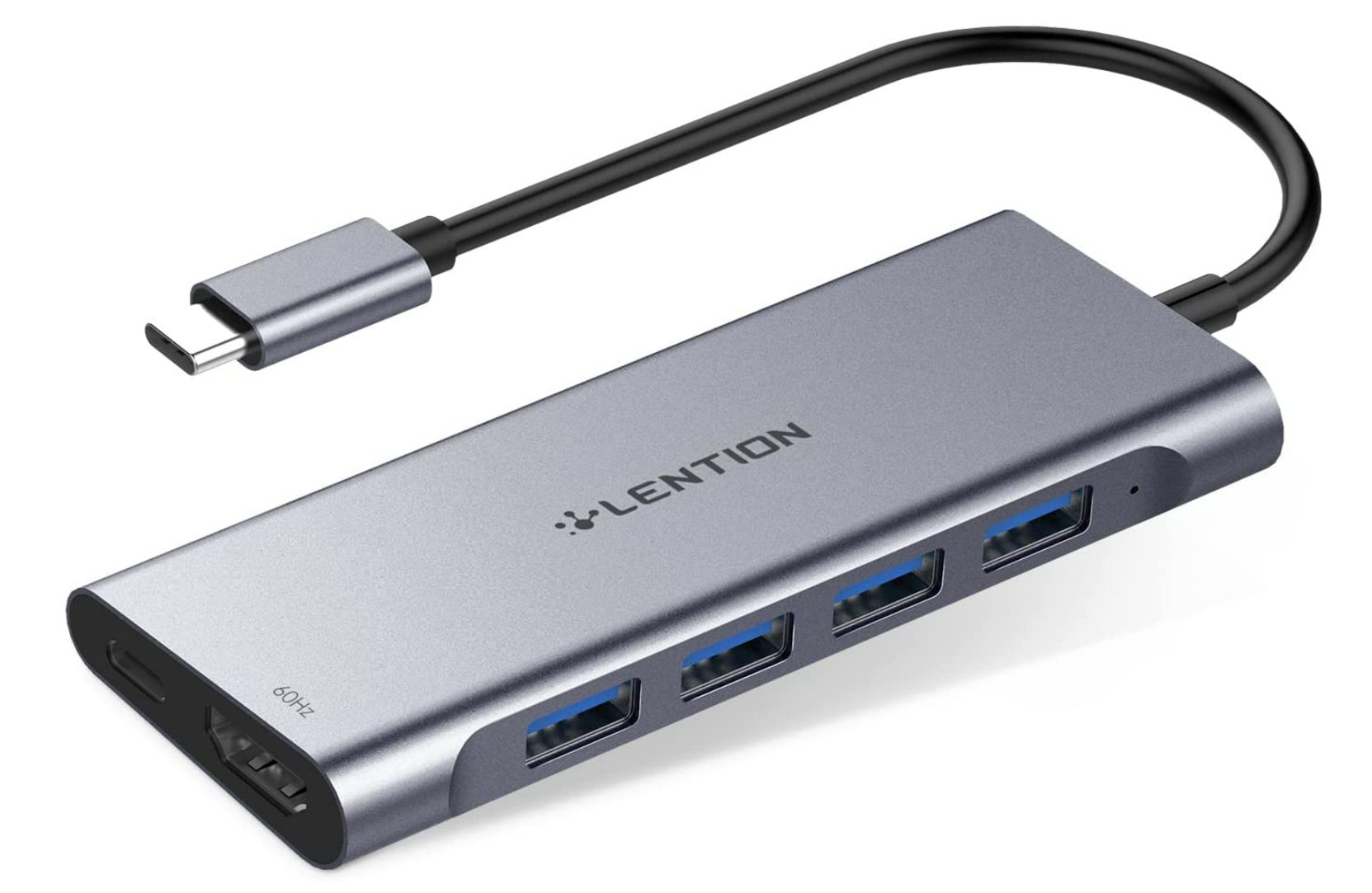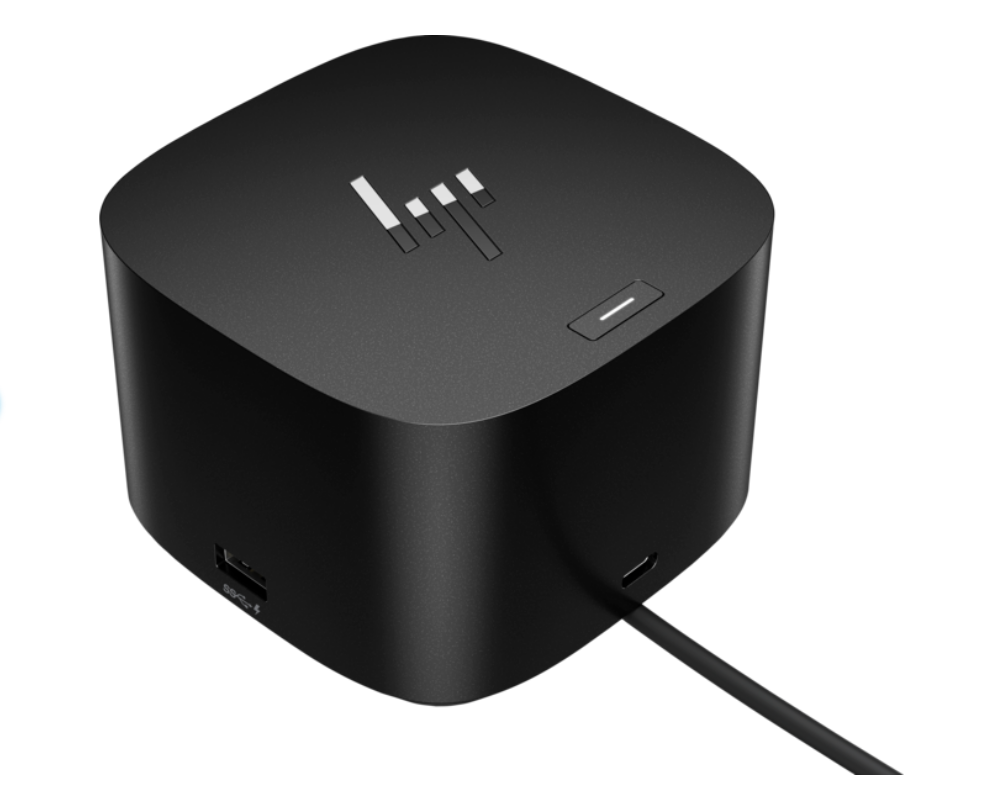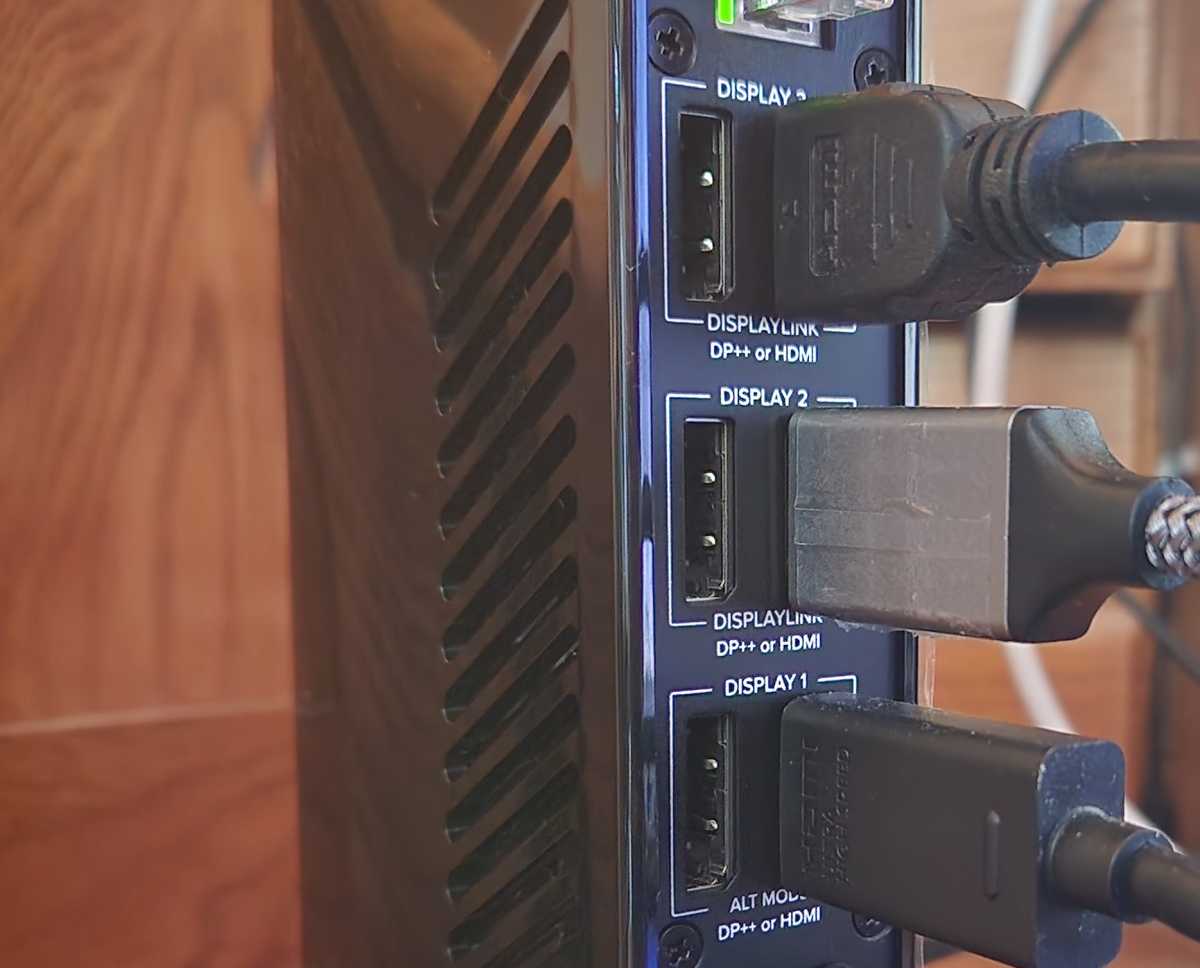Go more than, Thunderbolt: How DisplayLink USB-C docks can supercharge your notebook
 [ad_1]
[ad_1]
Right up until now, you have experienced two choices to grow the port abilities of your laptop computer: an reasonably priced USB-C dongle or a much more powerful, pricey Thunderbolt dock. A 3rd solution is quietly rising, trying to split the variance. A DisplayLink dock (occasionally identified as a USB-C dock) uses details compression to present the capabilities of a Thunderbolt dock around a regular USB-C cable.
USB-C hubs, Thunderbolt docks, and now DisplayLink docks have emerged for the reason that of two aspects: the escalating ubiquity of do-anything at all USB-C ports, and the realization by laptop computer makers that they can use these ports to do away with all the committed HDMI, microUSB, SD card slots, and USB-A ports that can clutter up their notebook PCs.
Standard USB-C hubs and Thunderbolt docks differ in equally cost, dimensions, and offered bandwidth. The latter element has customarily been the differentiator between the two products. A 10Gbits/s USB-C port simply doesn’t supply as substantially bandwidth as a 40Gbits/s Thunderbolt port, and the additional bandwidth can be devoted to far more shows, ports, and so on.
But the details compression made available by DisplayLink about the USB-C port places lesser-equipped laptops on a a lot more equivalent footing. Mainly, they enable you to increase numerous abilities of a modern Thunderbolt-equipped laptop computer even if you personal an older laptop with no Thunderbolt ports.
DisplayLink USB-C docks: pros and cons
DisplayLink docks therefore give some of the native capabilities of a Thunderbolt dock, specifically the ability to generate multiple higher-resolution displays. Because of the inherent bandwidth restrictions, they’re a superior choice for office staff, who can use those people additional displays for static apps like e mail, chat, spreadsheets, or workplace work.
They do, having said that, have some essential limitations. For just one, DisplayLink docks are not developed for gaming or driving external GPUs. USB-C docks and Thunderbolt docks alike are also usually plug-and-participate in right out of the box. A DisplayLink dock needs software program drivers to enable details compression, so you will want to download the proper DisplayLink software from the dock company. However, how DisplayLink interacts with your Computer system and GPU means that your Windows Laptop will occasionally face glitches, these as the inability for equipment like KVM switches and powerline adapters to get the job done correctly.
The finest USB-C hubs and dongles normally price tag between $25 and $40. When a travel Thunderbolt dock can expense about $170, the most effective Thunderbolt docks commonly price amongst $250 to $300 or so. That’s also the price variety of current DisplayLink docks like the Plugable UD-ULTC4K, even though, which retails for $279. We haven’t tested any cheap USB-C hubs that present DisplayLink compression inside, however we’ll place you to some later on in this story.
Buying for a DisplayLink dock can be a little bit complicated, much too, due to the fact the expression “DisplayLink dock” is not really in vogue. Instead, suppliers will occasionally use “USB-C dock” rather. We typically consider a USB-C hub as element of the exploding number of dongles related by a USB-C cable to the host Pc. These dongles usually contain a several USB-A ports, a USB-C port for charging or additional expansion, and typically an HDMI port or Ethernet port. We think about a USB-C dock to be a greater device, possibly run, with even more enlargement selections. But these much larger docks may perhaps not have the DisplayLink abilities identified as out in the technical specs, or even provide them. You will want to store carefully.


DisplayLink dock effectiveness, tested
Plugable sent us a single of their UD-ULTC4K USB-C docks for evaluation. Technically, it is a refresh of the company’s present USB-C Triple 4K Display Docking Station (which has given that been up-to-date on Amazon’s webpage), specially providing the choice of both DisplayPort 1.2 or HDMI 2. ports for every show — a magnificent possibility. It ships with a common 10Gbps USB-C cable and a 135W power adapter that can supply up to 95W to the host Laptop or 19.8W to a cellular phone through the entrance-mounted USB-C port. On the front of the UD-ULTC4K you are going to also locate an SD card and mic and headphone jacks. On the rear, Plugable incorporates 4 5Gbps USB-A ports, the USB-C relationship to the host Computer system, the power cable, and an Ethernet jack.

Mark Hachman / IDG
It is the 3 HDMI/DisplayPort connections that are truly worth paying consideration to. (DisplayPort, one of the exhibit benchmarks applied to link to a display screen, has practically nothing to do with DisplayLink, incidentally.) Two of the three sets of HDMI/DP ports on the UD-ULTC4K use DisplayLink compression, and are indicated as such. The third usually takes edge of a laptop computer element termed DisplayPort Alt Mode to deliver a far better, immediate link amongst your laptop and the screen by itself. (Sadly, the market has performed an certainly horrendous occupation conveying which USB-C-geared up laptops help DP Alt Mode and which really do not prospects are, nevertheless, yours does.)
So why does this subject? Since here, the DP Alt Mode port is the “good port,” and will hook up to an external 4K exhibit at 60Hz, which is much more comfy on your eyes. I related a 2nd 4K display around the DisplayLink port (employing HDMI) and could only hook up at 30Hz — fine for a secondary keep an eye on, but the slower refresh charge can fatigue your eyes. Regrettably I did not have a third 4K display screen on hand, and related the dock to a 1080p (at 60Hz) exhibit rather via the DisplayLink/HDMI port. That labored just wonderful.
The problem, as it generally is, is readily available bandwidth. Even though Thunderbolt provides 40Gbits/s of bandwidth, DisplayLink need to finesse alone by means of 10Gbits/s. In specified circumstances, that matters in other individuals, it completely does not.
G3 Box News tests dongles, docks and hubs in component using a 4K, 60Hz take a look at video clip streamed from YouTube. But YouTube doesn’t normally produce what you request, based on its understanding of your hardware and how properly it performs again movie. YouTube only played back the “4K” online video at 1440p, upscaled to close to-4K high-quality. On the other hand, it only dropped 35 frames out of 10,000. In actual-world phrases, YouTube shipped excellent top quality video clip with rarely any stutter.
That transformed when I experimented with copying a significant established of data files from an external hard drive in excess of the similar bus. All of a sudden, YouTube dropped frames like ridiculous — 1,223 out of 10,000 — and experienced to pause the video clip although it caught up. The online video high-quality defaulted to 1440p in the configurations menu, and sent much less than that. There was some obvious stuttering — nothing at all way too extraordinary, but there. Secured content performed again through Netflix, nevertheless.
We had been explicitly instructed not to recreation on the UD-ULTC4K, but tried using it out anyway. We found out what you may well assume: mainly staticly rendered online games like Cities: Skylines performed with unquestionably no visible drop in frame fee at all, even at 4K. Full War: Shogun 2 played in the same way. We didn’t check the latest first-particular person shooter on our budget notebook, but usually the UD-ULTC4K executed a great deal improved than predicted.
You might see some reviews of DisplayLink USB-C docks that show that DisplayLink does not engage in awesome with discrete GPUs. That may perhaps be the situation, but working with two laptops — one with a discrete GPU (a Microsoft Floor Laptop computer Studio), and 1 with integrated graphics (a Microsoft Area Laptop Go 2) — we observed no variation in functionality. Nor did we see any adjust in working with the involved, typical USB-C cable vs . swapping it for a devoted Thunderbolt cable, both.
Should you obtain a DisplayLink USB-C dock?
Not all DisplayLink docks are established equal. A single of the troubling issues with more sophisticated DisplayLink docks like the Plugable UD-ULTC4K is that it gives a very rough equivalent to a Thunderbolt dock, yet for the price tag of a entire-fledged dock by itself. What we’d hope for, nonetheless, is a cost that’s someplace in involving that of a generic USB-C dongle and a entire-fledged Thunderbolt dock.
Even though we have not examined both the $89 GIQ USB-C Hub or the $89 IVIIN USB-C Hub, both equally of these DisplayLink hubs strike that sweet spot, price-smart. But the specs tumble a bit quick: the GIQ dock supports up to two 2048×1152 shows, even though the IVIIN claims that a person exhibit will support 4K60, even though the other will assist 2048×1152. That can help justify the selling price of Plugable’s dock.
So what to do? If you’re an enthusiast who enjoys poring by means of specs and accepting the probability that a thing might not function, DisplayLink does present a possibility to develop your PC’s I/O abilities, even with hardware that does not help Thunderbolt. If you aren’t, experience totally free to return to the relative protection of a either a generic USB-C dongle or a highly effective Thunderbolt dock: both equally provide simplicity and a recognized practical experience.
[ad_2] https://g3box.org/news/tech/go-more-than-thunderbolt-how-displaylink-usb-c-docks-can-supercharge-your-notebook/?feed_id=3245&_unique_id=62d93a12dffc4


0 comments:
Post a Comment